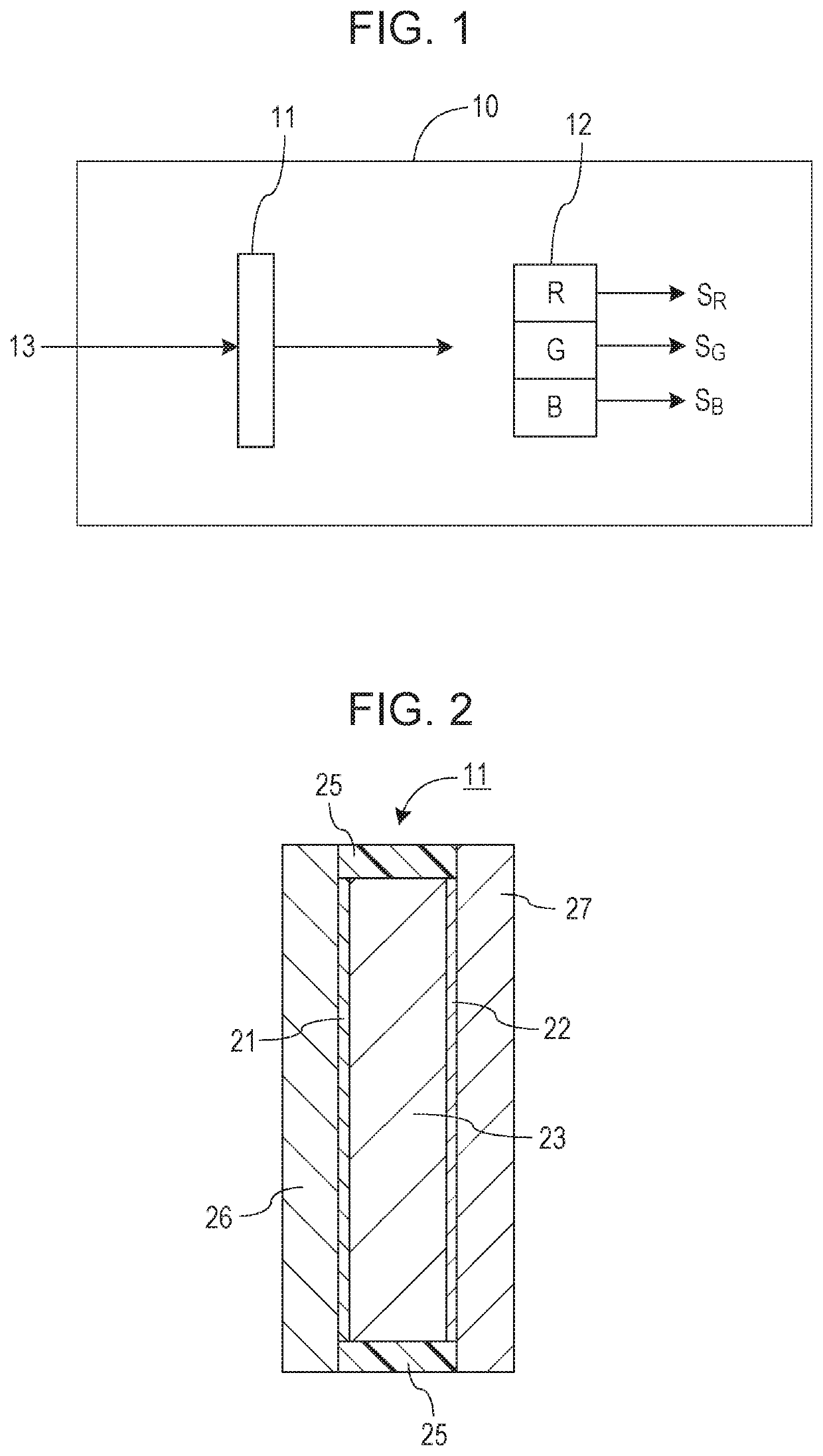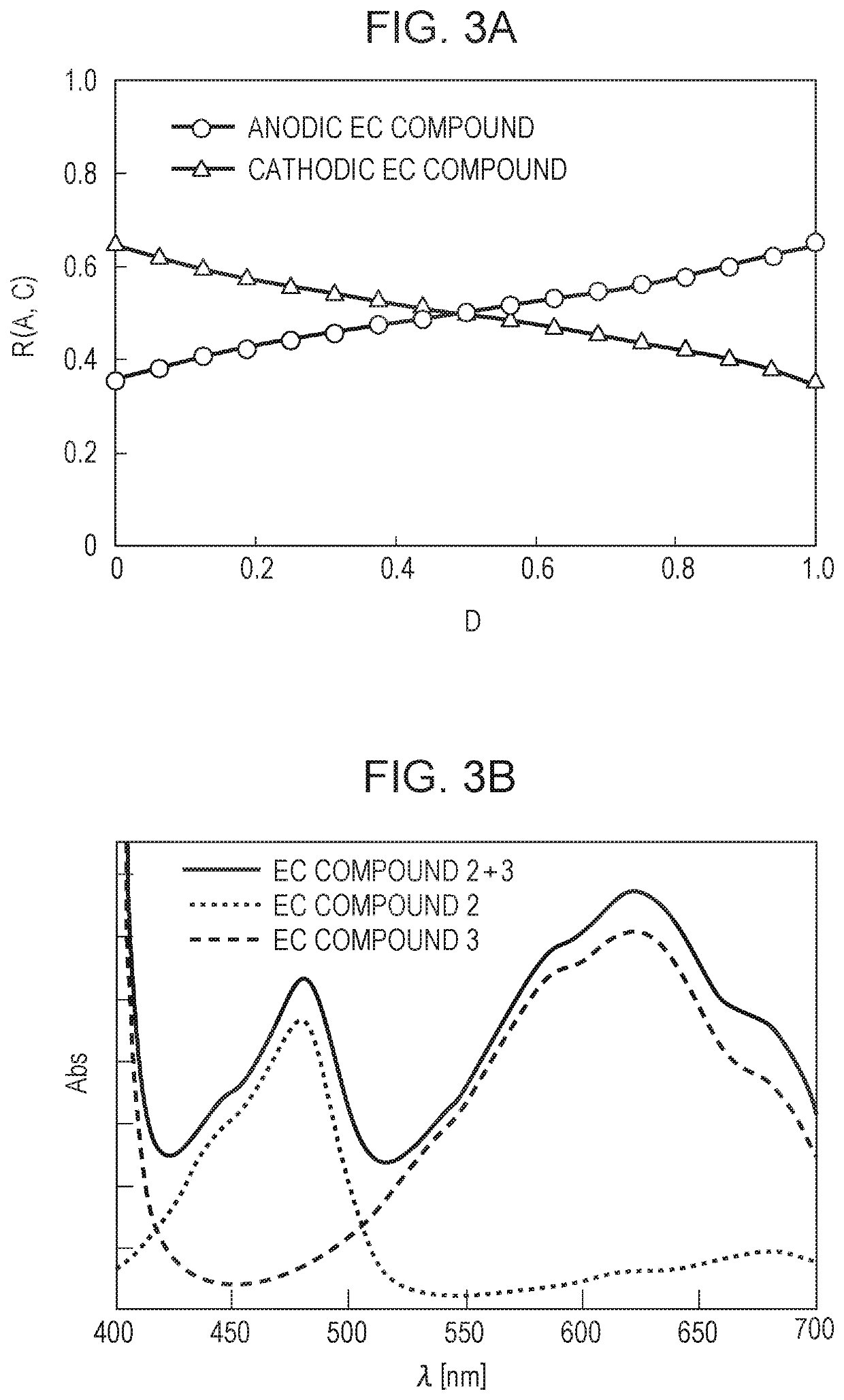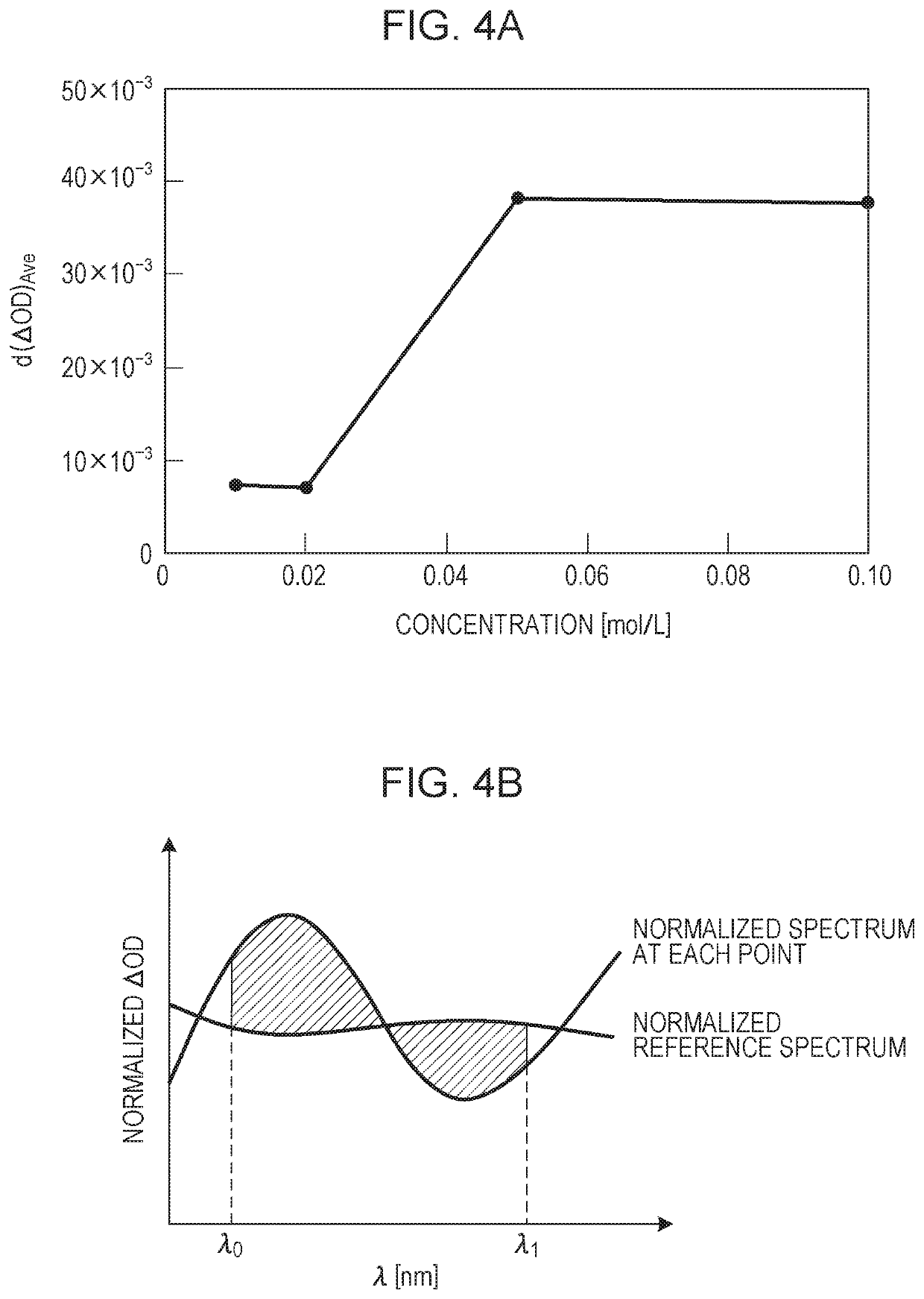Electrochromic element, optical apparatus, light control window, and image pickup apparatus
a technology of optical apparatus and optical elements, applied in non-linear optics, instruments, optics, etc., can solve the problems of insufficient viscosity of ec layer, and insufficient color unevenness reduction, so as to reduce color unevenness and color unevenness including vertical color separation , the effect of increasing the viscosity of the ec layer
- Summary
- Abstract
- Description
- Claims
- Application Information
AI Technical Summary
Benefits of technology
Problems solved by technology
Method used
Image
Examples
examples
[0092]The present disclosure will now be described in more detail with reference to examples, but these examples are not intended to limit the present disclosure.
EC Compound
[0093]Anodic EC compounds 4 to 6 represented by formulae (4) to (6) below were synthesized with reference to a patent literature (Japanese Patent No. 6012689), and anodic EC compounds 9 to 12 represented by general formulae (9) to (12) were synthesized with reference to a patent literature (Japanese Patent Laid-Open No. 2019-070789).
[0094]Cathodic EC compounds 7 and 8 represented by formulae (7) and (8) below were synthesized with reference to Japanese Patent Laid-Open No. 2017-165708, cathodic EC compounds 12 and 13 represented by general formulae (12) and (13) were synthesized with reference to Japanese Patent Laid-Open No. 2019-070789, and a cathodic EC compound 14 represented by general formula (14) were synthesized with reference to WO2017 / 010360.
[0095]An EC element having a structure illustrated in FIG. 2 w...
example a
[0097]The variable transmittance VT(λ) of the EC elements of Example 1 and Comparative Example 1 is constructed. FIG. 8 shows changed absorption coefficient spectra of the EC compounds 4 to 8. The light reduction ratio between the transmission state and the light reduction state of the EC elements was set to 8 (=average variable transmittance 12.5%).
Variable Transmittance VT(λ) of Examples
[0098]FIGS. 9A and 9B each show a variable transmittance spectrum (VTA(λ) and VTC(λ)) of an anodic EC compound obtained by combining the EC compounds 4 to 6 and a cathodic EC compound obtained by combining the EC compounds 7 and 8. Here, three are anodic compounds, and two are cathodic compounds. The total number of EC compounds used is five. The detection light wavelength range of a photodetector used here was the range from 425 nm to 680 nm of a photodetector (image pickup element) illustrated in FIG. 5A. The EC compounds 6 and 7 have a variable absorption spectrum peak in the R range of the phot...
example b
y Selection of Concentration of EC Compounds
Construction of Variable Transmittance VT(λ)
[0101]An anodic EC compound obtained by combining the EC compounds 4 to 6 and a cathodic EC compound obtained by combining the EC compounds 7 and 8 are combined to construct variable transmittance spectra (VTA(λ) and VTC(λ)). Here, three are anodic compounds, and two are cathodic compounds. The total number of EC compounds used is five. The detection light wavelength range of a photodetector used here was the range from 425 nm to 680 nm of a photodetector (image pickup element) illustrated in FIG. 5A. The EC compounds 6 and 7 have a variable absorption spectrum peak in the R range of the photodetector, the EC compounds 5 and 8 in the G range of the photodetector, and the EC compounds 4 and 5 in the B range of the photodetector. Table 2 shows the concentration (mmol / L) in a light reduction state of the EC compounds of Examples and Comparative Examples and RRGAC calculated using a photodetector hav...
PUM
| Property | Measurement | Unit |
|---|---|---|
| color temperature | aaaaa | aaaaa |
| transmittance | aaaaa | aaaaa |
| transmittance | aaaaa | aaaaa |
Abstract
Description
Claims
Application Information
 Login to View More
Login to View More - R&D
- Intellectual Property
- Life Sciences
- Materials
- Tech Scout
- Unparalleled Data Quality
- Higher Quality Content
- 60% Fewer Hallucinations
Browse by: Latest US Patents, China's latest patents, Technical Efficacy Thesaurus, Application Domain, Technology Topic, Popular Technical Reports.
© 2025 PatSnap. All rights reserved.Legal|Privacy policy|Modern Slavery Act Transparency Statement|Sitemap|About US| Contact US: help@patsnap.com



